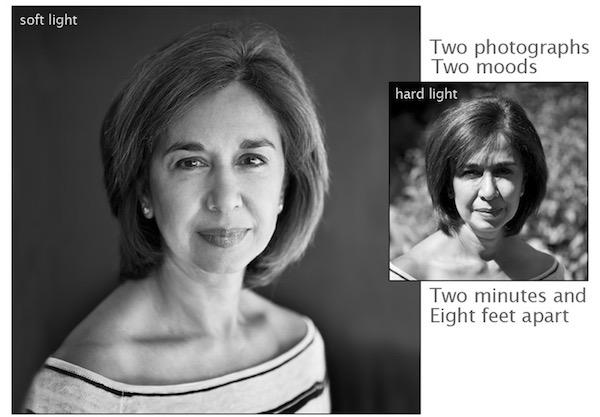The difference between soft light and hard light
posted Monday, March 16, 2015 at 9:22 AM EDT

I can’t remember what the language of love is but the language of photography is light. When the light is right everything you say with your camera is filtered through some kind of photographic French accent. The words—or, in this case, the pictures—are the same except better. Just like a French accent, beautiful light touches people emotionally. (Come to think of it, French is the language of love, right?)
You need to know the difference between hard light and soft light. Hard light makes distinct, hard-edged shadows. Soft light makes shadows that are barely visible. A sunny day is hard light. A cloudy day is soft light. It’s that simple and that complicated.
When the sun is straight overhead the light is harsh and unflattering—think overhead lightbulb. When the sun is on the horizon it’s golden and romantic—think the best pictures you’ve ever seen in National Geographic.

Maybe more than you want to know
An electronic flash–either built into your camera or as a separate attachment -- is a “point light source”. Because it’s a small light bulb it produces hard light and hard shadows. (Remember what a flash light looked like under your chin at summer camp. It’s exactly the same thing.)
If you can point it at the ceiling, however, and turn the entire ceiling into a light source you have re-created the soft, flattering light of a cloudy day. A cloudy day may be less dramatic, but it’s consistently more flattering -- remember the no wrinkles example.

Most professionals, when faced with the prospect of taking pictures all day, would probably choose a cloudy day over a sunny day. I shot a book of nature photographs several years ago and of the 75 pictures in the book, five of them were taken on sunny days; the rest were taken on cloudy days -- or in fog whenever I could find it.
The perfect weather forecast for a working photographer would read something like: clear at sunrise, cloudy all day, clear at sunset.
(An exceptional educator and a world-class photographer, Nick Kelsh is the founder of How To Photograph Your Life, an excellent source of affordable photography training and tips. Nick’s courses can be conducted by yourself in your own time, or with feedback from Nick and your fellow students. If you appreciated this article and want to improve your photography, visit How to Photograph your Life and sign up for a course today!)